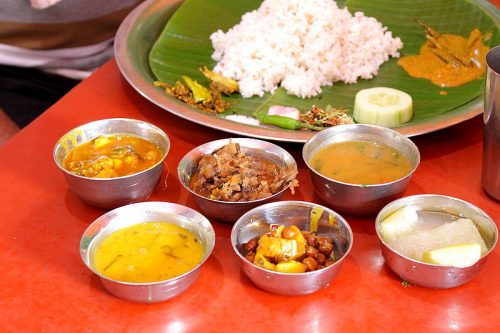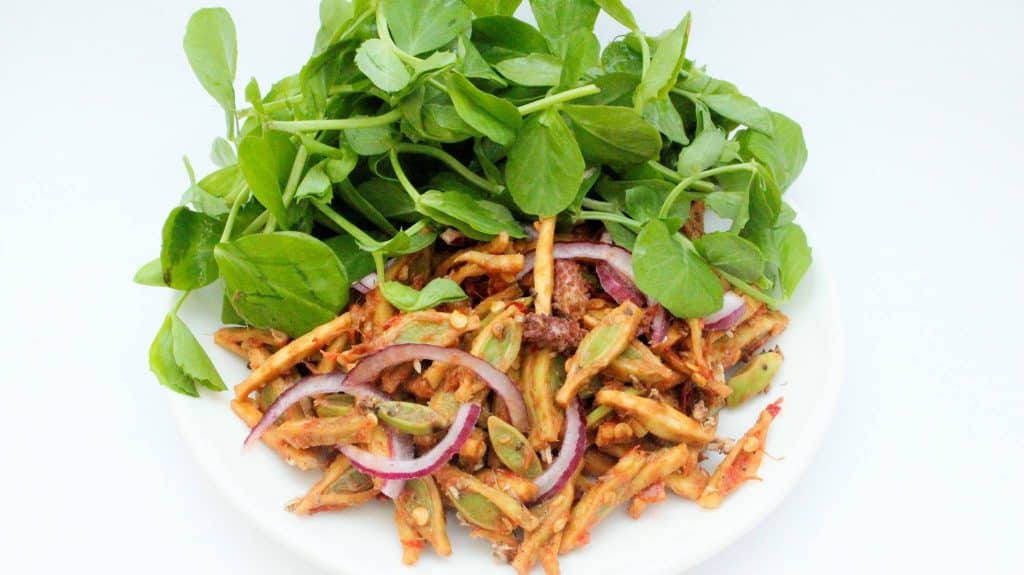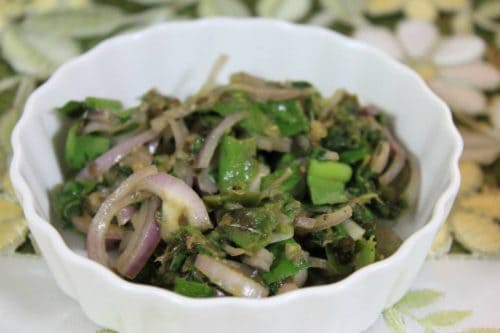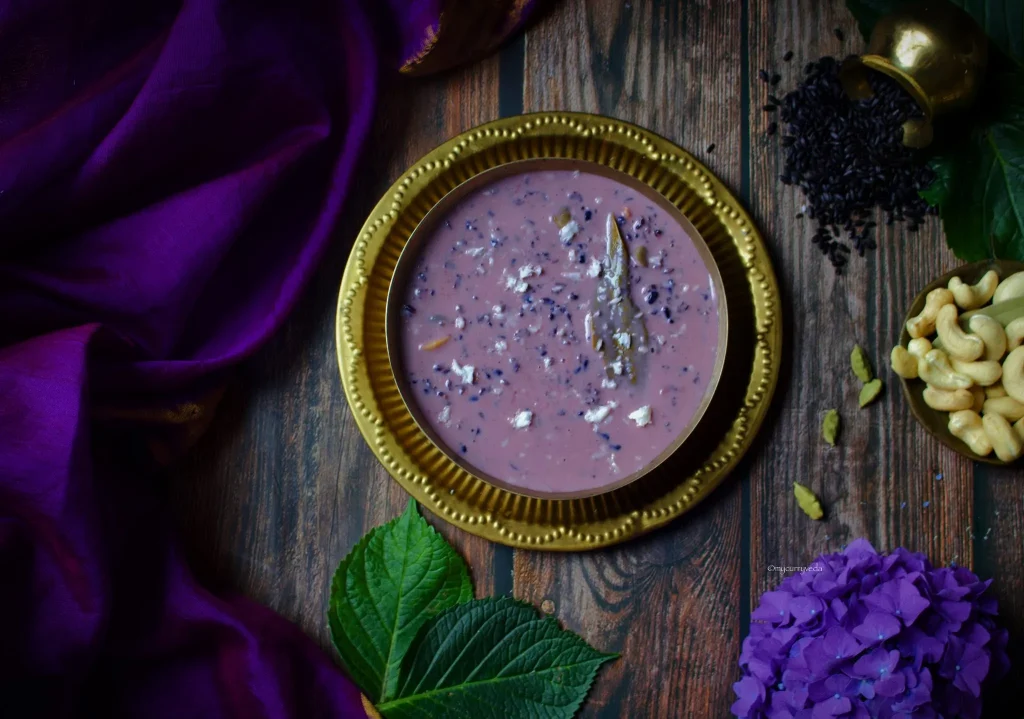Get on a flavourful journey with our handpicked selection of Manipur dishes.

Welcome to Manipur, where your taste buds embark on a flavourful adventure through the northeastern corner of India. This vibrant region boasts a culinary tradition that’s as rich as its culture and as lush as its landscapes. Manipur’s cuisine is the epitome of bold, fresh, and always satisfying.
Rice is the star of the show here, always paired with a delightful cast of seasonal veggies, wild herbs, and fermented goodies that bring a zing to every dish. And if meat is a favourite, you’re in for a treat! Fish, chicken, and pork are regulars at this delicious gathering, all infused with maroi (chives) and ngari (fermented fish) for that distinctive Manipuri taste.
But that’s not all! Manipur’s cuisine is like a culinary tribute to nature, reflecting the region’s unique geography and culture. It’s a sensory delight, with flavours ranging from mild to “where’s the water?!” spicy. So, if you’re a fan of rice, fish, and leafy greens, consider Manipuri food your new go-to. Bon appétit!
Taste of Manipur: A Culinary Celebration of Tradition and Nature’s Bounty
Located in the northeastern corner of India, Manipur boasts a vibrant and diverse culinary tradition that reflects its rich cultural heritage and lush natural landscape. Manipur’s cuisine is characterized by its bold flavours, fresh ingredients, and minimal use of oil, making it both healthy and deeply satisfying.
Manipur’s cuisine reflects the geographical and socio-cultural uniqueness of this land in the Indian subcontinent’s north-eastern corner. The cuisine of this region shows the people’s close relationship with nature. Manipuri food is an exquisite treat to the senses, with an amazing array of flavours ranging from plain to spicy. Rice, fish and leafy green vegetables are prevalent in Manipuri cuisine.

Singju
Manipur’s Singju is a dish that is said to have started with the Meitei culture, but it has since spread to most of the state’s ethnic communities as well as some neighbouring states in Northeast India. Singju has a lot of variations because its major ingredient is seasonal veggies. Ngari-based and Thoiding-Besan-based are the two most common forms. It’s popular as an afternoon or evening snack, and it’s often served as a spicy side dish.
It is a vibrant mix of finely sliced or julienned vegetables, such as cabbage, banana flower, lotus stem, and pea shoots, often combined with herbs like coriander and maroi (chives). The dish is given its distinctive tangy and spicy kick through the addition of red chilli powder, roasted chickpea powder, and fermented fish known as ngari, which are integral to Manipuri cuisine.
Singju is often enjoyed as a snack or a side dish, offering a refreshing contrast to the more substantial elements of a meal. The dish’s simplicity and reliance on fresh, locally sourced ingredients make it not only a staple in Manipuri households but also a representation of the region’s culinary ethos that values health, flavour, and tradition in equal measure.
Nga-Thongba
Manipur’s food is substantially hotter than that of the rest of the northeast. Nga Thongba is a fish curry made with both red and green chillies, as well as mustard oil, ginger, and garlic. The oily quality of the powerful fish complements the tart and fiery flavours of the sauce in this variation, which is traditionally made with white fish.
This traditional fish curry is prepared with freshwater fish, which is typically first fried and then simmered in a spiced gravy. The gravy is made using a blend of local spices, onions, ginger, garlic, and sometimes tomatoes, creating a savoury and slightly tangy base that complements the fish perfectly. A key characteristic of Nga-Thongba is the use of turmeric, which gives the dish its distinct golden hue and earthy undertones. The dish is often garnished with fresh coriander and sometimes maroi (chives) to enhance its flavour profile.
Nga-Thongba is usually served with steamed rice, making it a comforting and hearty meal that is deeply rooted in Manipuri culinary traditions. The dish is beloved for its balance of spices and the freshness of the fish, reflecting the region’s rich natural resources and its people’s deep connection to their land and waterways.
Paaknam
The word “Paknam” can be broken down into two parts: ‘pak’ meaning flat and ‘nam’ meaning press. Renowned for its distinctive taste and texture, Paknam is a traditional steamed dish from Manipur made with a variety of vegetables, fish, or other meats. This savoury Manipuri pancake is typically made from gram flour, seasoned with chives, and infused with the flavour of ngari (fermented fish).
It is then wrapped in a turmeric leaf, similar to how one might prepare a pancake. The batter, a thick mixture of besan, herbs, vegetables, chilli, and traditional ngari, is finally encased in a banana leaf and steamed to perfection. Paknam also referred to as the “Manipuri pizza,” is both delicious and healthy, enjoyed as a side dish or street food by the people of Manipur for generations. It’s a must-try for anyone exploring Manipuri cuisine.
Eromba
Eromba is one of the traditional dishes to try in Manipuri that holds a significant place in the state’s culinary landscape. The dish is a flavorful mash of boiled vegetables, typically potatoes or seasonal greens, mixed with fermented fish known as ngari, which is a key ingredient in many Manipuri recipes. Eromba is distinguished by its spicy and tangy profile, often heightened with the addition of red or green chillies, making it a dish that packs a punch in both flavour and aroma.
The simplicity of Eromba lies in its preparation; the ingredients are boiled, mashed, and then blended with the ngari and chillies, sometimes garnished with fresh herbs like coriander or maroi (chives). The dish is usually served as a side, complementing rice or other delicious food dishes, and is cherished for its rustic, earthy flavours that encapsulate the essence of Manipur’s traditional cuisine.
Alu Kangmet
Alu Kangmet is a simple yet flavorful dish that is a staple and finds its place among the famous food of Manipur. This dish primarily consists of mashed potatoes mixed with a generous amount of mustard oil, which imparts a distinct and robust flavour. The potatoes are boiled and then mashed until smooth and are typically combined with ingredients like finely chopped onions, green chillies, and salt to enhance the taste. In some variations, fried red chillies are also added to give the dish an extra kick.

Alu Kangmet is often enjoyed as a side dish and pairs well with steamed rice or other traditional Manipuri dishes. Its straightforward preparation and comforting taste make it a popular choice in Manipuri households, where it is appreciated for its ability to bring warmth and flavour to a meal.
Morok Metpa
Morok Metpa is one of the state’s most popular delicacies. It’s a salad-like food from Manipur. It is frequently served as a side dish with most lunch main course entrees. It’s a dry, slightly spicy dish created with seasonal veggies. It can be eaten as a snack as well. It is a popular meal for the inhabitants of the northeast.

This chutney is primarily made from fresh green or red chillies, which are either boiled or roasted before being ground into a coarse paste. The chillies are often combined with ngari (fermented fish), a staple in Manipuri cooking, to add a deep umami flavour to the chutney.
Finely chopped onions, salt, and coriander are also mixed in to balance the heat and enhance the taste. In some variations, dried fish or herbs like maroi (chives) are added for extra depth. Morok Metpa is typically served as a condiment alongside rice and other main dishes, adding a burst of heat and flavour that complements the meal
Chamthong
Chamthong, also known as Kangshoi, is a traditional Men’s meal from Manipur and Assam’s Barak Valley region. It’s a stew made with dry fish or grilled fish chunks and any seasonal veggies. Chomthong is a soupy dish that is served with rice. It’s a flavorful and nutritious stew made with fresh local vegetables, herbs, turmeric, and the spicy bhut jolokia or ghost chilli. It is one of the state’s most important dishes. It is most commonly cooked during festival celebrations.
The dish is seasoned with salt, and a touch of chilli, and garnished with maroi (chives) or coriander leaves for added freshness. Chamthong is a staple in Manipuri households, often served hot alongside steamed rice. Its light and wholesome nature makes it a comforting meal, especially during the colder months. The simplicity of Chamthong, combined with its emphasis on fresh, locally sourced ingredients, reflects the core principles of Manipuri cuisine, which values health, flavour, and a deep connection to the land.
Uti Thongba
In Manipur, no major feast is complete without ‘Uti thongba.’ Uti thongba is a traditional Manipuri vegetarian dish that can be prepared in a variety of ways by the locals. It can be served as a main dish or as a side dish with your favourite meat curry. The ‘Usoi Mangan uti,’ which is a whole grain with fresh bamboo shoot uti, is a popular form of Uti Thongba.
This dish is highly valued for its nourishing qualities and is a common feature in Manipuri meals, reflecting the region’s emphasis on balanced, wholesome eating. The combination of earthy lentils with the bold flavours of traditional Manipuri spices makes Uti Thongba a comforting and satisfying dish that is both nutritious and delicious.
Champhut
Champhut (with “cham” meaning simple and “phut” meaning boil) is a vegetarian dish characterized by its simplicity, with no spices or strong flavours. It consists of boiled vegetables like mustard leaves and shoots, carrots, cabbage, peas, bottle gourd, and cucumber.
Due to its straightforward nature, Champhut is often either loved or disliked, with only a small amount of sugar or salt added for taste. Despite its simplicity, special combinations of herbs and vegetables are carefully selected to enhance the dish’s appeal. Similar to Ooti, Champhut is a staple at feasts in the region, as its mild flavour helps to highlight the spicier dishes served alongside it.
Chak Hao Kheer
The Chak-Hao Amubi (Black Rice Pudding) is a delicacy from India’s North East, namely Manipur. Assam and Manipur grow a huge amount of black rice, which is drought-tolerant and mineral-rich. This unique rice variety is revered for its deep purple-black colour, nutty flavour, and high nutritional value, including rich antioxidants, fibre, and iron content.

The singju paaknam chakhao kheer is prepared by cooking the black rice in milk and sweetening it with sugar or jaggery, resulting in a creamy, mildly sweet dish with a distinctive aroma and striking colour. Chak-hao Kheer is often served during festive occasions and special ceremonies in Manipur, symbolizing prosperity and good health.
Manipur dishes offer a unique fusion of tradition and innovation, creating an unforgettable culinary experience that lingers long after the last bite.
Read more: Latest



